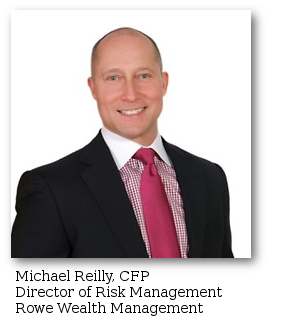Related Blogs
May 15, 2019 | Michael Reilly
So, here we go again…
It’s the next Big Scary Thing for investors to worry about. There’s always another one lurking just around the corner.
In Q4 of 2018, it was the fear that the Federal Reserve would raise rates too aggressively, causing a global economic slowdown. Before that it was an impending U.S.-China trade war, a fear that has just reemerged.
You see, as soon as one big scary thing subsides, it’s replaced with headlines telling us what we should fear next. It’s a never ending cycle that investors fall for every time.
Here’s a headline from earlier this week.
By now, you should know the drill. The financial news industry will always be constructing billboards with 10-foot-tall, bold-faced type to highlight any potential bump in the road.
Sometimes it makes me want to shout, “Cmon people! – how do you think the financial news industry earns a living? By generating clicks!” After all, an article titled “Everything’s Fine”, doesn’t generate many clicks. “If it bleeds, it leads” didn’t become a newsroom adage by accident.
So, here we are again – with China squarely in the cross hairs of the Trump Administration and “easy pickins” for every financial news channel looking for headlines.
And you can bet that if it wasn’t China, it’d be something else.
The point is we can’t try to adjust for every headline or potential bump in the road.
One thing’s for sure, just as the sun will rise tomorrow, you can rely on the financial media hyping the next Big Scary Thing. It’s their job.
You can also rely on the fact that they’re often going to be wrong.
And even when the Big Scary Thing does happen, the consequences are usually not as dire as was hyped.
Take a look at the image below, which shows some of the Big Scary Things over the last ten years – using a P&F chart of the SPDR Dow Jones Industrial Average ETFs DIA.
 (Chart Courtesy of Nasdaq Dorsey Wright)
(Chart Courtesy of Nasdaq Dorsey Wright)
As the chart of DIA shows, there have been plenty of Big Scary Things over the past 10 years – and, in the end, many of them had little to no long term effect on the market.
I’d be surprised if most people even remember the fear-stoking headlines surrounding the U.S. Credit Downgrade or the Russian troops in Crimea. Yet, at the time, they were both hyped by the media to be the biggest, baddest, worst thing investors could face.
And investors, being human, fell for it – again and again…
The price chart below – of the DJIA, shows similar data as the P&F chart of DIA above – although it may be easier to see what I’m getting at.
Imagine for a minute that you had hibernated in a cave from last September until last week.
You wake and naturally want to know how your accounts have held up in your absence. You missed out on all the emotional angst other investors felt as they endured a pretty volatile ride that included an extreme draw-down and a sharp ride back up.
To you, it would look like you had missed one of the most uneventful seven months in the history of the domestic equity market.
The point here is not that bad things or bear markets can’t happen, or that we’d be better off implementing a pure buy-and-hold strategy.
The point is that the headlines aren’t a good barometer, and having an objective rules-based system can help you avoid falling prey to market noise.
A rules based system can also keep you focused on what real signals the market, not the media, are giving you.
But let’s not kid ourselves. It’s easy to follow the rules you’ve set for yourself when things are going well, but can you do it when the going gets rough and you start to second guess yourself?
Anyone answering honestly will admit that the answer is often no. And this can be the difference between the success of an individual investor’s portfolio or one professionally built and managed.
Professionally managed portfolios like ours aren’t affected by headlines over the long-term.
All our investment decisions are based on a strict set of rules and indicators, which tells us what the market is saying (instead of a talking head) and guides us when it’s time to alter an allocation or raise cash in a portfolio.
If you’re interested in more information on how our models use rule based systems to identify stocks and ETFs with the best chances of outperforming the market, feel free to email us at info@rowewealth.com or schedule an appointment with one of our advisors.
Qualified investors with portfolios of at least $500,000 are eligible for a completely free evaluation. This will quickly allow you to see how much strength and risk you’re currently carrying in your portfolio, and give you an accurate idea of how much you stand to gain or lose over the next six months.
Click here to see available appointment times.
As always, invest wisely.

Tags

Get Our FREE Guide
How to Find the Best Advisor for You
Learn how to choose an advisor that has your best interests in mind. You'll also be subscribed to ADAPT, Avalon’s free newsletter with updates on our strongest performing investment models and market insights from a responsible money management perspective.



